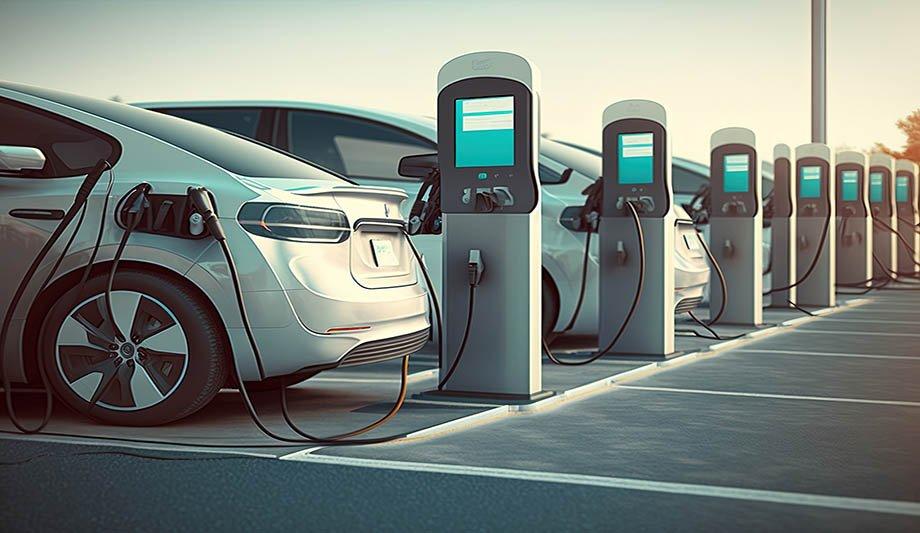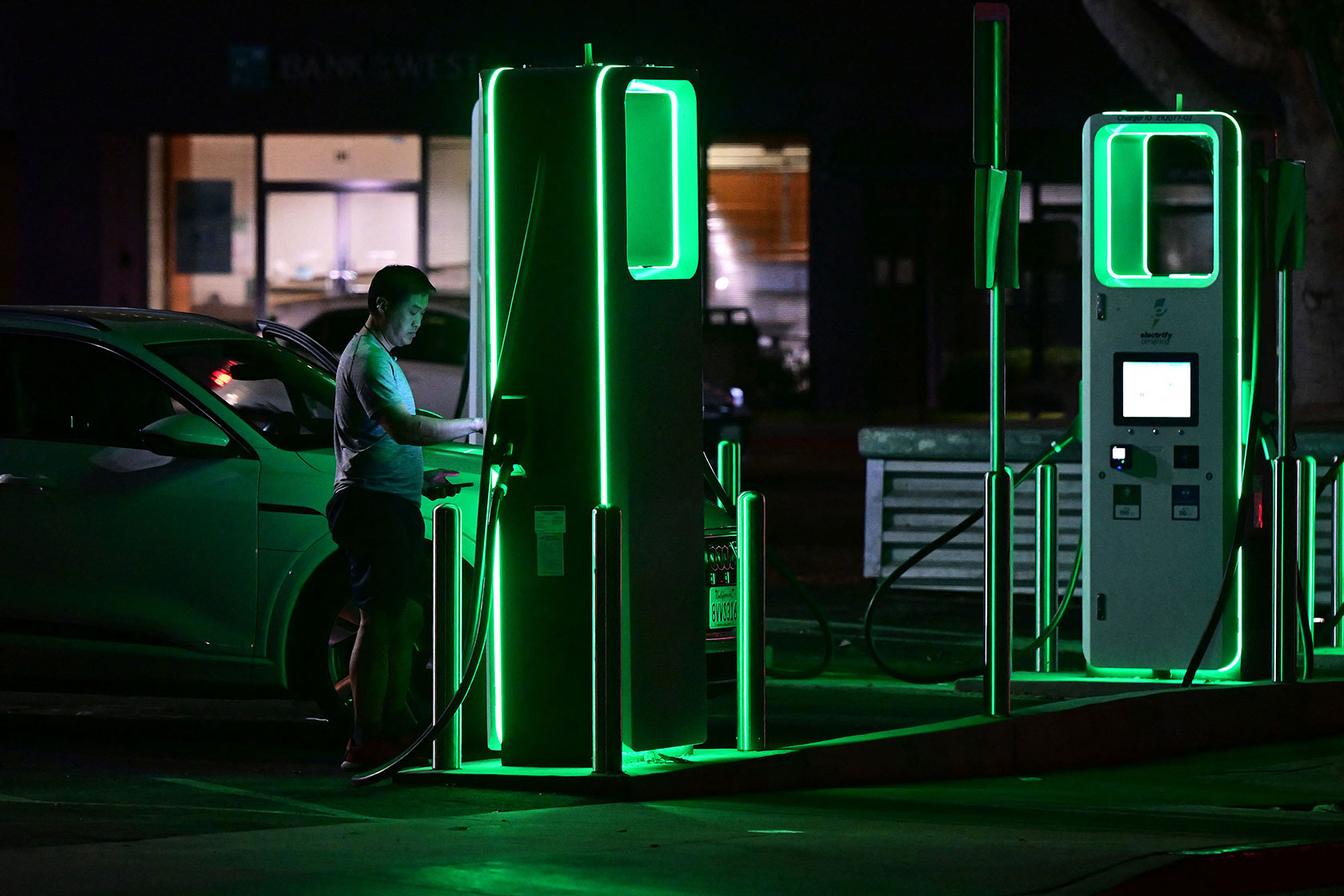Key Innovations in the EV Sector You’ll Find in Today’s Buy EV Charging news
Key Innovations in the EV Sector You’ll Find in Today’s Buy EV Charging news
Blog Article
Top EV Charging Information: Secret Updates on Framework and Advancement

Recent Innovations in Fast-Charging Modern Technology

Moreover, innovations in battery innovation, including improved thermal monitoring systems and higher energy density batteries, enhance fast-charging abilities. These advancements reduce the risk of battery deterioration during rapid charging, guaranteeing longevity and efficiency for EV proprietors.
Additionally, the integration of smart charging remedies is enhancing customer experience, allowing real-time surveillance and dynamic pricing designs. EV Charging news. This adaptability permits vehicle drivers to enhance charging expenses and times based on grid need
As automakers remain to buy fast-charging networks, the cooperation between market stakeholders is critical. Partnerships between charging terminal service providers and vehicle producers are leading the means for substantial coverage, inevitably fostering an extra durable EV environment. These improvements are critical in supporting the transition to lasting transportation.
Federal Government Initiatives for Charging Growth
Federal government campaigns play a critical duty in the development of electric vehicle (EV) charging facilities, helping with the transition to sustainable transport. Various federal and state programs are being carried out to boost charging access, minimize the financial worry on consumers, and promote the fostering of electrical automobiles.
Especially, the U.S. government has actually assigned substantial funding through the Infrastructure Investment and Jobs Act, which sets aside $7.5 billion for EV charging network development throughout the nation. This funding is targeted at releasing thousands of new billing terminals, particularly in underserved areas, thereby addressing array anxiety amongst possible EV buyers.
Additionally, many states are establishing regulations to streamline the allowing procedure for billing terminal installations, which is important for increasing implementation. Motivations such as tax obligation credits and refunds for both customers and businesses are also being presented to urge the installation of billing infrastructure.
In addition, public-private collaborations are significantly becoming an emphasis, leveraging exclusive financial investment to complement federal government financing. These efforts emphasize a collective technique essential for building a efficient and detailed EV charging network, ultimately adding to a greener and even more sustainable future.
Ingenious Battery Solutions Enhancing Performance
Changing the landscape of electric vehicle (EV) technology, ingenious battery solutions are considerably improving effectiveness and efficiency. Advances in battery chemistry, particularly with lithium-sulfur and solid-state batteries, are resulting in raised power density, which permits longer arrays and faster billing times. These brand-new battery kinds have the potential to outperform conventional lithium-ion batteries check these guys out by providing higher capacities while lowering weight, thereby enhancing general vehicle performance.
In addition, growths in battery administration systems (BMS) are maximizing power usage and prolonging battery lifespan. Intelligent algorithms keep track of battery health and wellness and efficiency, making it possible for real-time changes to charging and discharging processes. This not only enhances the performance of the battery yet also makes sure a more reliable and sustainable energy resource for EVs.
Moreover, the integration of recycling innovations is attending to the ecological influence of battery production and disposal. Developments in second-life applications for EV batteries are promoting their usage in power storage space systems, adding to a round economic climate.
As these ingenious battery solutions proceed to evolve, they assure to change the EV market, making electrical automobiles extra available and enticing to a more comprehensive audience while supporting international sustainability goals.

Collaboration Between Automakers and Charging Networks
Identifying the crucial need for a durable charging facilities, automakers are progressively teaming up with billing network suppliers to boost the EV possession experience (EV Charging news). These collaborations intend to create a smooth billing community that benefits customers and supports the shift to electric cars
Major automotive brands are signing up with forces with recognized charging networks to broaden their billing station insurance coverage, ensuring chauffeurs have accessibility to convenient and reliable billing options. For example, collaborations with networks like ChargePoint and Electrify America permit automakers to incorporate billing options directly into their cars' navigation systems, leading users to the local terminals and giving real-time schedule updates.
Moreover, these partnerships typically lead to the development of fast-charging innovations that substantially reduce the moment needed to charge an EV. By merging resources and proficiency, car manufacturers and charging networks can innovate much faster, producing services that meet the expanding need for electrical wheelchair.
Additionally, joint efforts might likewise lead to even more standardized charging methods, which can ease consumer confusion and promote wider EV fostering. Overall, these strategic partnerships are critical in developing a user-friendly and efficient charging facilities that fulfills the needs of an increasing electric automobile market.
Difficulties Facing EV Charging Facilities
As the electric vehicle market proceeds to expand, a number of challenges are surfacing that impede the development of a detailed charging infrastructure. One of the primary challenges is the inadequate variety of billing terminals, especially in rural and underserved urban locations. This void creates variety anxiousness among potential EV customers, discouraging them from making the switch.
In addition, the absence of standardization in charging technology makes complex the facilities landscape. Variants in plug kinds and billing speeds can create complication for customers and boost operational intricacies for charging network operators.
Another pushing issue is the high expense connected with the installment and upkeep of charging terminals, which can be an obstacle for both exclusive organizations and public entities. Finally, governing difficulties and zoning limitations can postpone the deployment of billing framework, restraining progress in increasing crucial services. Attending to these challenges will certainly be essential for cultivating a durable EV ecological community that sustains the shift to lasting transport.
Final Thought
To conclude, the ongoing innovations in EV charging innovation, supported by significant federal government efforts and innovative battery remedies, are important for the expansion and efficiency of electrical lorry infrastructure. review Collaborations in between automakers and billing carriers better enhance station protection, dealing with the growing demand for available billing options. In spite of challenges that linger within the EV advice billing landscape, these developments indicate a positive trajectory in the direction of a more reliable and sustainable electric car environment.
Technologies in billing facilities have actually led to the development of ultra-fast chargers capable of supplying up to 350 kW of power, dramatically minimizing charging times. Variations in plug kinds and charging speeds can create complication for users and enhance operational intricacies for charging network operators.In verdict, the continuous developments in EV billing technology, sustained by significant government campaigns and innovative battery options, are critical for the development and effectiveness of electric automobile infrastructure. Cooperations in between car manufacturers and charging service providers better improve terminal coverage, attending to the growing need for obtainable billing choices. In spite of challenges that continue within the EV charging landscape, these growths represent a positive trajectory towards a much more effective and sustainable electrical vehicle ecological community.
Report this page